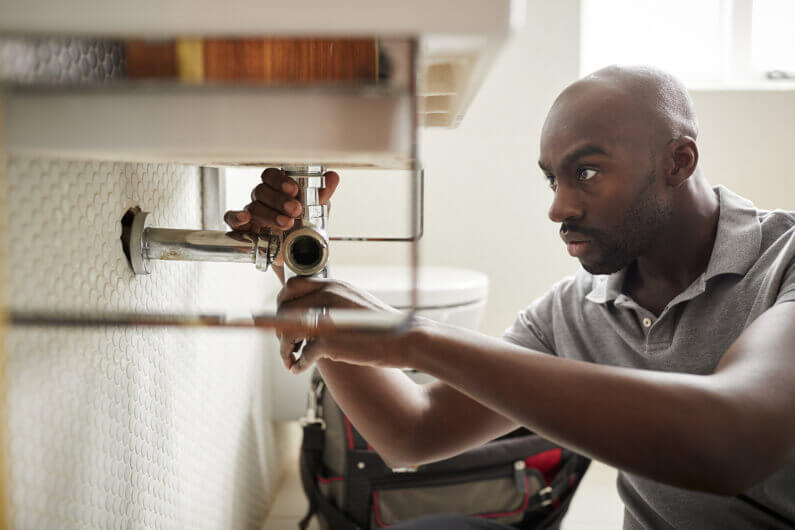Important Plumbing Alabaster AL Tips for Homeowners
Important Plumbing Alabaster AL Tips for Homeowners
Blog Article
A Step-by-Step Overview to Reliable Hot Water Heater Installment for Optimum Efficiency
Beginning on the task of mounting a hot water heater is a venture that demands accuracy and a methodical method for achieving optimal performance. The process begins with the critical choice of choosing the appropriate heating system tailored to the specific needs of your family, taking into consideration aspects such as kind, energy, and dimension resource. When chosen, preparing the setup area to satisfy safety requirements is extremely important. Nonetheless, the journey does not end below. As you continue, the intricacies of attaching supply of water lines and establishing up trusted electrical or gas links wait for, promising understandings into making sure efficiency and dependability.
Picking the Right Hot Water Heater

Next, think about the dimension and ability of the water heater. It's important to examine your house's warm water needs, which can vary based on the number of owners and their use patterns. A device that's too small may result in insufficient warm water, while a large version may lead to unneeded power intake.
Performance rankings likewise play a crucial duty in option. Seek hot water heater with high Energy Factor (EF) ratings, showing superior performance and lowered energy use. Tankless versions, though typically more pricey ahead of time, deal considerable energy savings gradually as a result of their on-demand home heating abilities.
Preparing the Setup Area
Prior to installing a brand-new water heater, thorough preparation of the installment area is crucial. It's important to gauge the area meticulously to fit the water heating system's dimensions, making certain sufficient clearance around the device for efficient procedure and maintenance.
Next, eliminate any debris, dust, or blockages from the website to develop a clean environment. Check the floor for stability, as the hot water heater will certainly require a solid, level surface to run properly. If essential, install a drip pan beneath the unit to catch prospective leaks or spills, stopping water damages to the surrounding location. In areas vulnerable to seismic task, consider installing seismic straps to secure the heater firmly in position.
In addition, make certain that all essential devices and materials are on hand before commencing the installment. This consists of products such as wrenches, screwdrivers, a level, and any added equipment required for mounting and securing the heating system. A well-prepared installation location sets the foundation for an effective water heating unit setup, optimizing efficiency and security.
Connecting Water Lines
When attaching supply of water lines to your newly installed water heating unit, it is crucial to make sure that all connections are safe and leak-free to keep efficient operation and stop water damages. Begin by identifying the cool and hot water lines. The chilly water inlet is generally noted with a blue label or a "C", while the warm water outlet is noted with a red label or an "H".
Usage adaptable water heater adapters to promote you could look here an easier setup process. Prior to affixing the adapters, position a plumber's tape around the threaded ends of the water heater's inlet and outlet pipes.
When links are in location, gradually activate the primary water shutoff. Evaluate each link for leakages by aesthetically feeling and inspecting find this for wetness. Tighten connections as required, and make sure the pressure safety valve is correctly installed, safeguarding against excessive pressure build-up.
Establishing Electrical or Gas Links
Correctly establishing up the electrical or gas links for your water heating unit is an essential action to make sure risk-free and efficient procedure. For electric water heating units, begin by confirming that the electrical circuit is suitable with the heater's voltage and amperage demands.
For gas water heating systems, safety is vital. Link the gas line to the water heater making use of an adaptable gas connector, ensuring it is appropriately threaded and secured with pipe joint compound or Teflon tape appropriate for gas links.
As soon as links are made, examine for any type of possible leaks. For gas lines, apply a soapy water remedy to the joints; bubbles show a leakage. For electric connections, confirm that all electrical wiring is safe and effectively insulated, keeping conformity with local electrical codes.
Changing and checking for Effectiveness
With the electric and gas links safely in location, the following step is reviewing the functional performance of your hot water heater. Begin by carefully activating the water and making certain there are no leakages at any one of the valves or joints. Once confirmed, proceed to fill the tank, taking notice of the stress and temperature setups. It is suggested to establish the thermostat to a suggested temperature of around 120 ° F(49 ° C) to balance power performance and convenience.
Next, execute a comprehensive inspection to make certain the home heating elements or gas heaters are working correctly. For electrical heating units, make use of a multimeter to confirm if the aspects are drawing the appropriate existing. In gas models, observe the heater flame; it needs to be stable and blue, showing effective combustion.
Adjust the setups as essential to get rid of inefficiencies. Take into consideration carrying out insulation steps, such as including a water heating unit covering, to even more boost performance by minimizing warm loss. In addition, inspect the anode pole's condition, as a tatty rod can minimize efficiency and cause tank rust.
Verdict
Effective water heating system setup is critical for making sure optimum performance and energy financial savings. By selecting the suitable kind and dimension, and meticulously preparing the setup location, a foundation for success is developed. Firmly connecting supply of water lines and very you can find out more carefully establishing up electrical or gas connections reduce possible concerns. Comprehensive testing for leaks and specific thermostat adjustments to 120 ° F enhance dependability and effectiveness. Abiding by these actions advertises lasting functionality and energy conservation in domestic water heater.

Effectively setting up the electrical or gas connections for your water heater is a vital action to make certain efficient and safe operation. For electric water heaters, begin by verifying that the electrical circuit is compatible with the heater's voltage and amperage needs. Attach the gas line to the water heating unit making use of a versatile gas adapter, ensuring it is correctly threaded and sealed with pipeline joint compound or Teflon tape appropriate for gas links.
Report this page